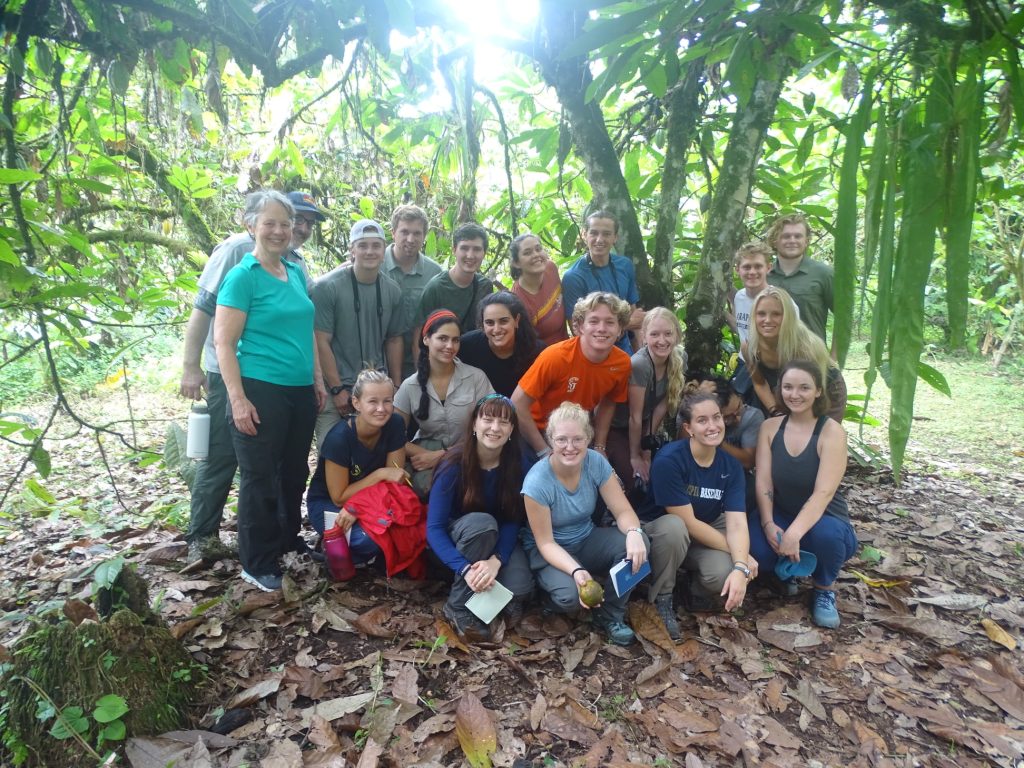By Camille Clarke, Emmett Wainwright, Gail Pyne, Gracie Paul, Kelsie Huss

After our 6:30 AM hike from the Santa Lucia ecolodge, we got on a bus and headed farther west, away from Quito and the mountains. The land got flatter and the landscape was increasingly filled with monoculture plantations of cacao, palms for palm oil, and bananas – all significant export crops. Chicao, Pedro and Marianella’s farm, was different. It felt like stepping into a tropical utopia. It wasn’t a plantation. It was a farm, a nature preserve, and a beautiful home.
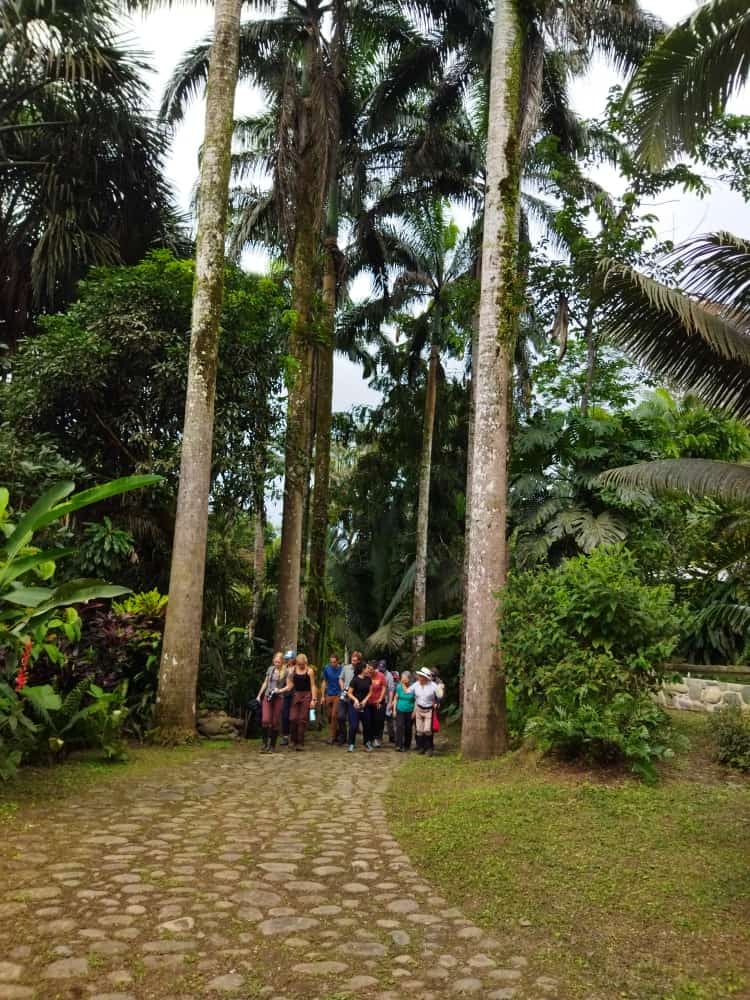
The Chicao farm is located in the lowland rainforest in the northwestern section of Ecuador. While the region itself was slightly humid, the overall climate was very pleasant. The plantation is located on a primary forest, meaning the land hasn’t been impacted or changed by humans. The wood from one of the main tree species in the forest has been referred to as an incorruptible wood due to its strong and long-lasting nature. Even after lying on the forest floor for roughly 300 years, the wood has still managed to stay intact. The wood used in the home and buildings of the farm comes from that same primary forest wood that has fallen naturally to the forest floor.
Of the 135 types of cacao that grow in Ecuador, 75 grow naturally on the Chicao farm. The cacao pods contain the beans which are later used for chocolate production, and each pod has a different size, smell, color, and shape. Ecuador is known for its high quality cacao beans (as opposed to bulk beans for cheap commercial chocolate), and there are 4 primary indicators of quality cacao pods. These indicators include: a small neck at the top of the pod, the fruit pod

body being non-symmetrical (convex), deep grooves running vertically down the pod, and the pod having a bumpy exterior. Cacao trees have tiny white flowers that are only pollinated by a tiny fly which has a symbiotic relationship with the cacao tree. It takes 6 months to go from flower to pod, and during this time, the cacao pods can absorb all the surroundings flavors, therefore partially explaining why various chocolates can have flavor notes such as floral, fruity, or nutty.
A special aspect of this farm lies in the genetics of their cacao trees. Eight years ago, a multidisciplinary and multinational team did a DNA study of cacao to understand where the cacao tree originated from. To find the origin, you simply find the region with the most genetic variety. The origin for all cacao was from Samara Chinchipe – Ecuador’s section of the Amazon rainforest, 5,432 years ago. Like many others, the Chicao farm participated in the study. Unlike the others, a 70 year old tree on the Chicao property has genetic code directly from the original birthplace of cacao. This tree is then considered a patrimonial cacao tree and is important for understanding the biology of cacao and continuing conservation efforts.
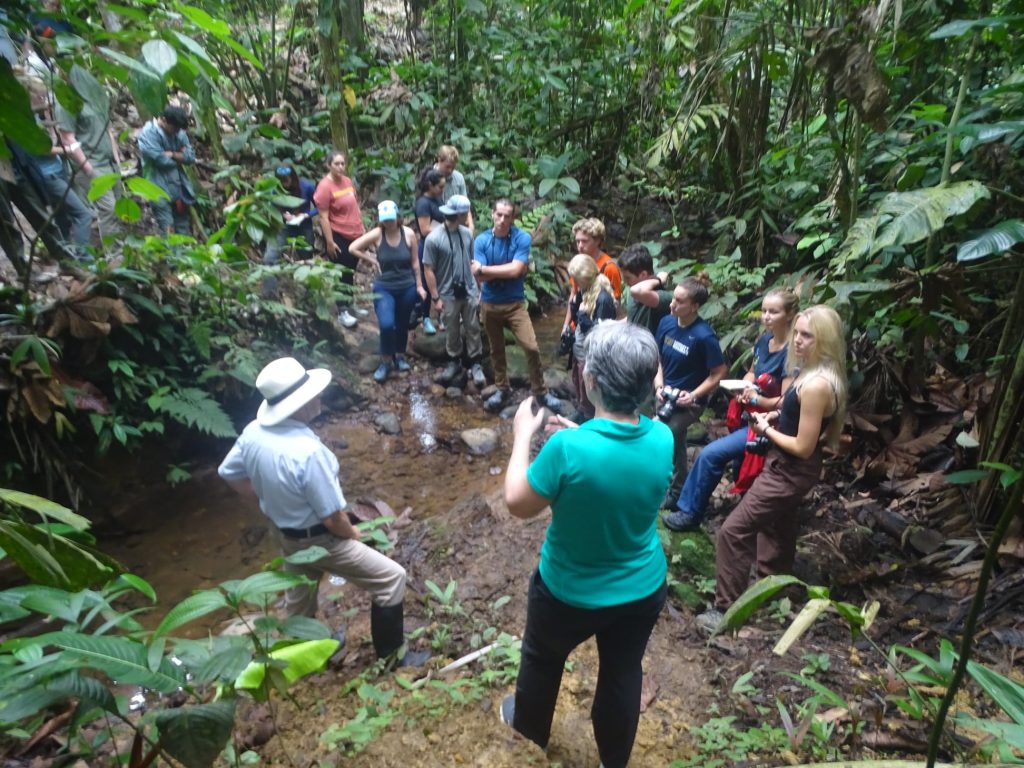
Upon being welcomed with open arms, the Chicao plantation immediately felt like a home away from home. Pedro and Marianela, the plantation owners, radiated an unconditional form of joy and excitement. Their smiles and energy were truly contagious, and it didn’t take long for these spirited greetings to be reciprocated by the group. This level of sheer excitement was evident throughout the day as they did many things to illustrate that they were thinking of us days before our official arrival. For example, Pedro noted that he had purposely left one cacao pod on a select cacao tree so that he could knock down the cacao pod, and we could try the seeds straight from that pod.
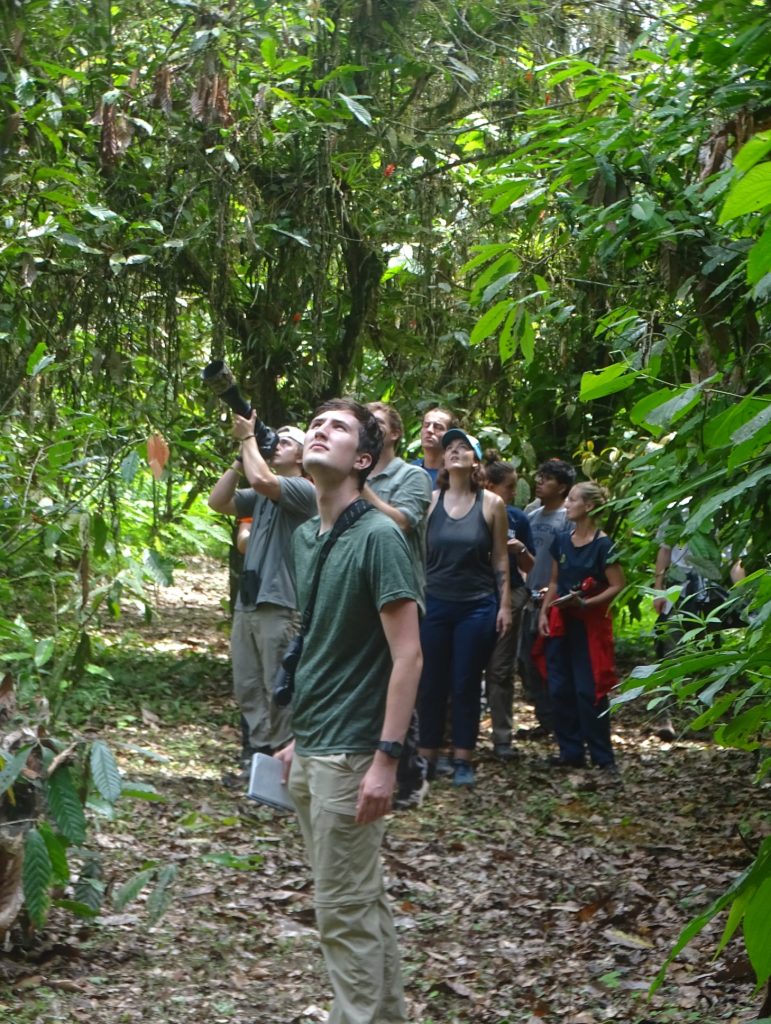
To orient us with the area, Pedro debriefed us on the history of the land, and what the land means to his family. Pedro and Marianela purchased land 23 years ago solely because of the water on the land. With two spring origins of streams on the property, they found what they came for; what they didn’t plan on was the rich biodiversity that would sustain them and their growing family. In fact, they weren’t even aware of the numerous cacao varieties growing naturally on their property until they had been living there for 2 weeks. With this, they didn’t come to the plantation to make money, they came to live. Their children were born and raised here, and the plantation has since assisted them in developing a close-knit community for their family to continually bond and grow with. By living here, Pedro and Marianella
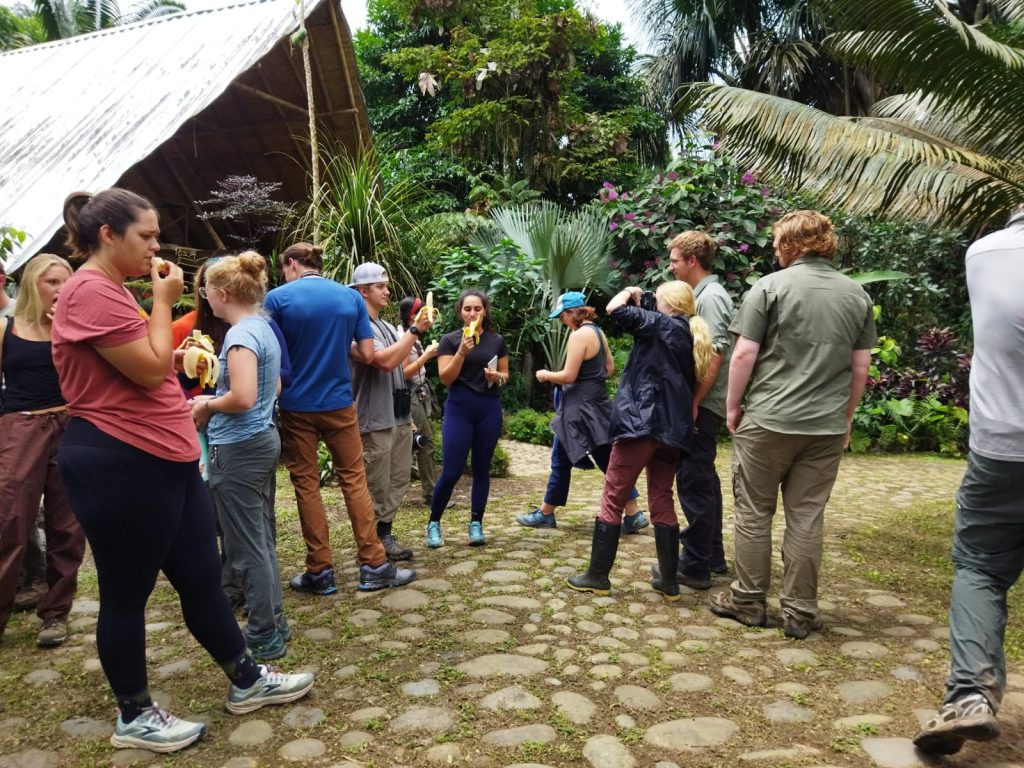
wanted their children to learn to love water, wood, air, and the earth, as loving these things are direct indicators of a sustainable human being. As time has continued to pass, their world is now defined by cacao, chocolate, birds, and music.
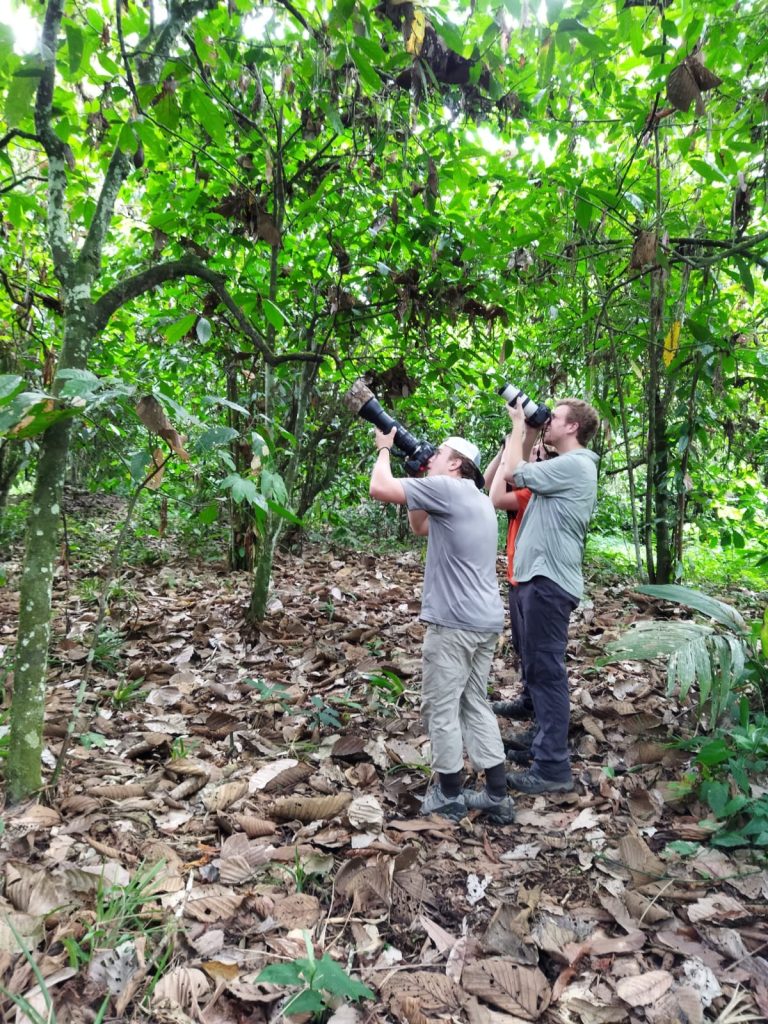
As a sneak peek into their family’s musicality, Pedro and Camila (one of his daughters) played three traditional Ecuadorian songs as a precursor to lunch. While Camila played the guitar, Pedro played the quena – a traditional flute of the Andes. All of the instruments they play are handmade from resources which are directly sourced from the farm. With there being twenty-five different types of bamboo grown on the farm, seven of these bamboo types are used in the production of instruments. As the final song came to an end and the group ruptured into roaring applause, lunch was served.
For lunch, a large plate of rice, chicken, and plantain chips with ceviche, and for the vegetarians, an even larger portion of rice and plantain chips with ceviche. Quoted by many, this meal was one of the
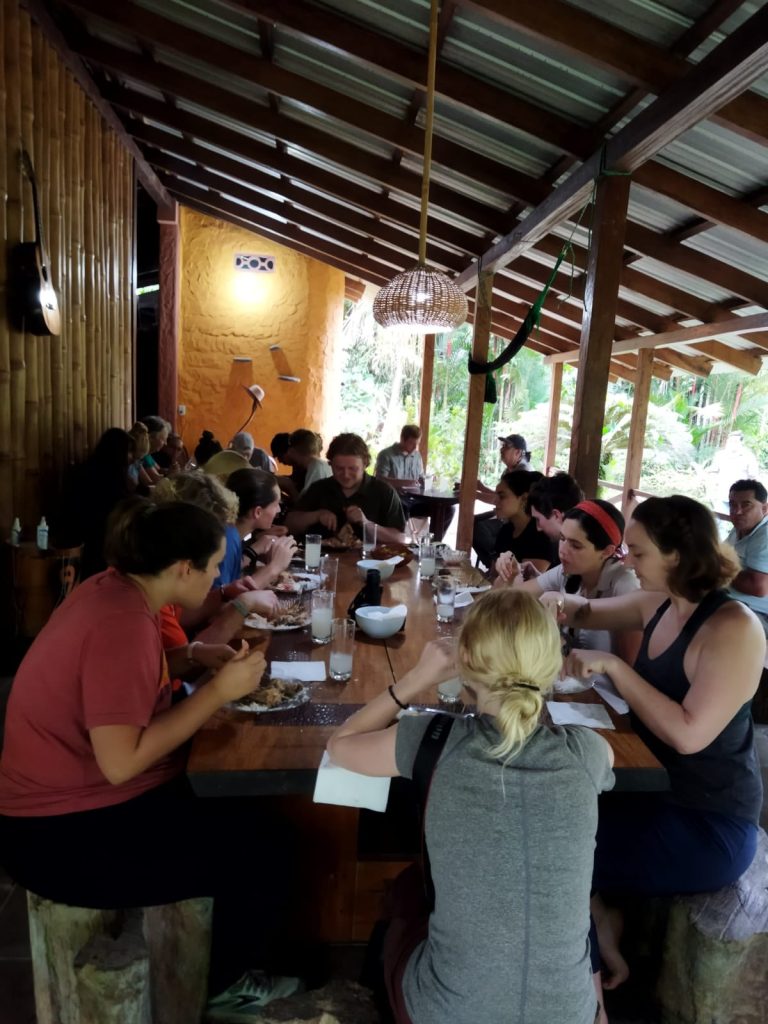
best (if not the best) meals that we’ve had the pleasure of eating on the trip thus far. As we inquired into what made this meal so delicious, Pedro informed us that the palm hearts were harvested on the farm at 9 am that morning, the spices were freshly picked from their garden, and the chicken was born and raised on the land. Before even learning that, several commented on how this was “the best chicken they’ve ever had.” Taken aback with sheer joy by our positive remarks, Pedro joyously clapped around the dining tables and quickly skirted towards his family to inform them of the good news. Shortly after everyone finished their meal and began to disperse around the tables and outdoor fountains, the group reconvened at a nearby building for an interactive demonstration of the chocolate production process.
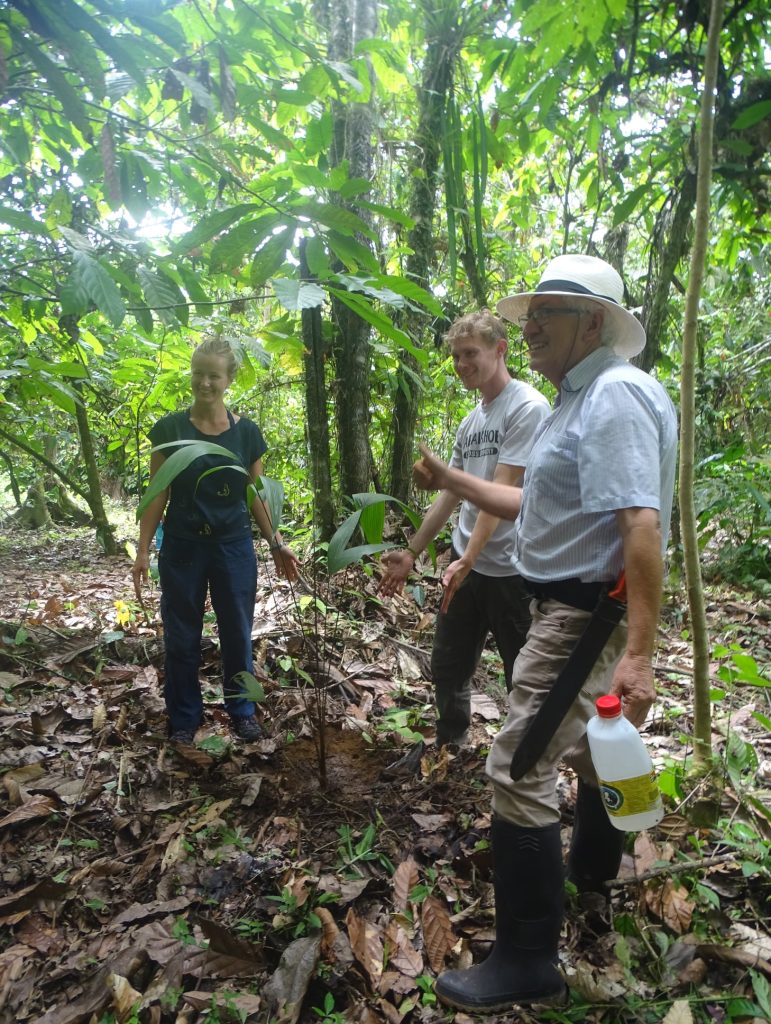
One doesn’t often think about where a bar of chocolate comes from, and therefore doesn’t recognize the complexity behind the chocolate making process. A $1.00 chocolate bar in the grocery store has gone through so many different steps that are unfathomable to the average consumer. One of the biggest goals for our time at the Chicao farm was to understand this complex process and to be able to experiment with it ourselves. Pedro walked us through the process, explaining each step and its importance.
First, we saw him knock down a cacao pod from a tree on his farm and cut it open to collect the cacao’s pulp and beans. Although we didn’t witness the fermentation step, Pedro noted that this step takes 5 days, and is essential for the flavor development of the cacao bean.
These beans were then dried by sunlight on a flat table for 2 weeks. The beans were roasted at 130 degrees celsius, and then placed into a machine to separate the beans from the shell – producing cacao nibs. The cacao nibs were then ground into cacao liquor – an unsweetened liquid form of chocolate. Depending on the desired
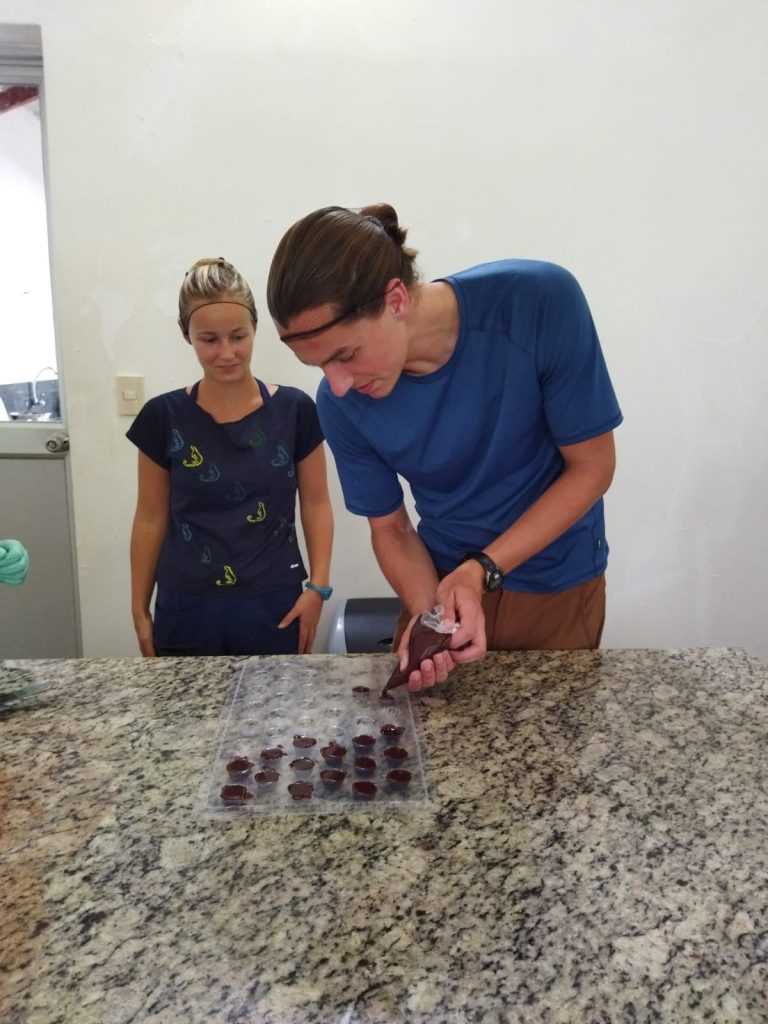
taste, the cacao undergoes a process called conching. This step involves adding additional ingredients to the cacao such as cocoa butter, milk, sugar and other flavorings. One of the last steps in the production of chocolate is tempering – a process by which chocolate is heated and cooled. When chocolate is tempered properly, it
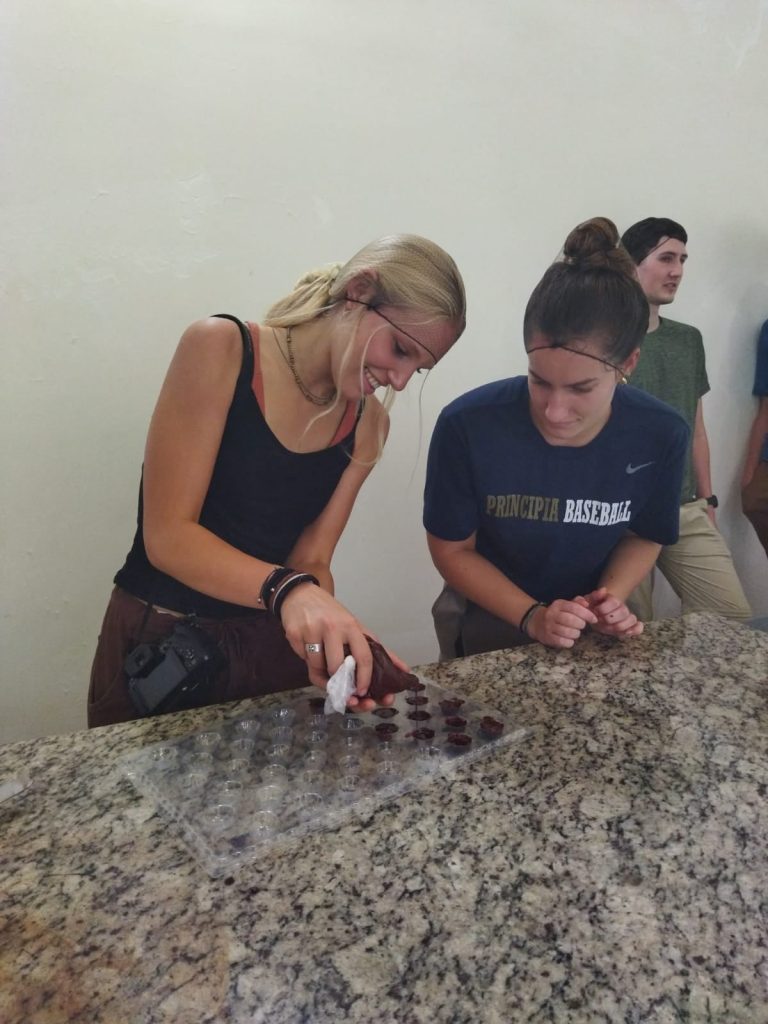
has a shiny exterior and there is a loud, clear snap when you break it in half. Once the chocolate was tempered, our group poured the tempered chocolate into molds so it could then be placed in the refrigerator to harden.

After tasting delicious freshly made chocolate it was time to begin our journey back to Quito. We received love and encouragement from Pedro and Marianella to return to their farm soon. Pedro had welcomed us into his home as family, and in leaving we took away lasting memories of the passion he had for his life project. We also left behind a connection to the farm in the form of two palms. Pedro invited us to plant two palm trees in the forest to cement the importance of taking action towards preserving our natural environment.
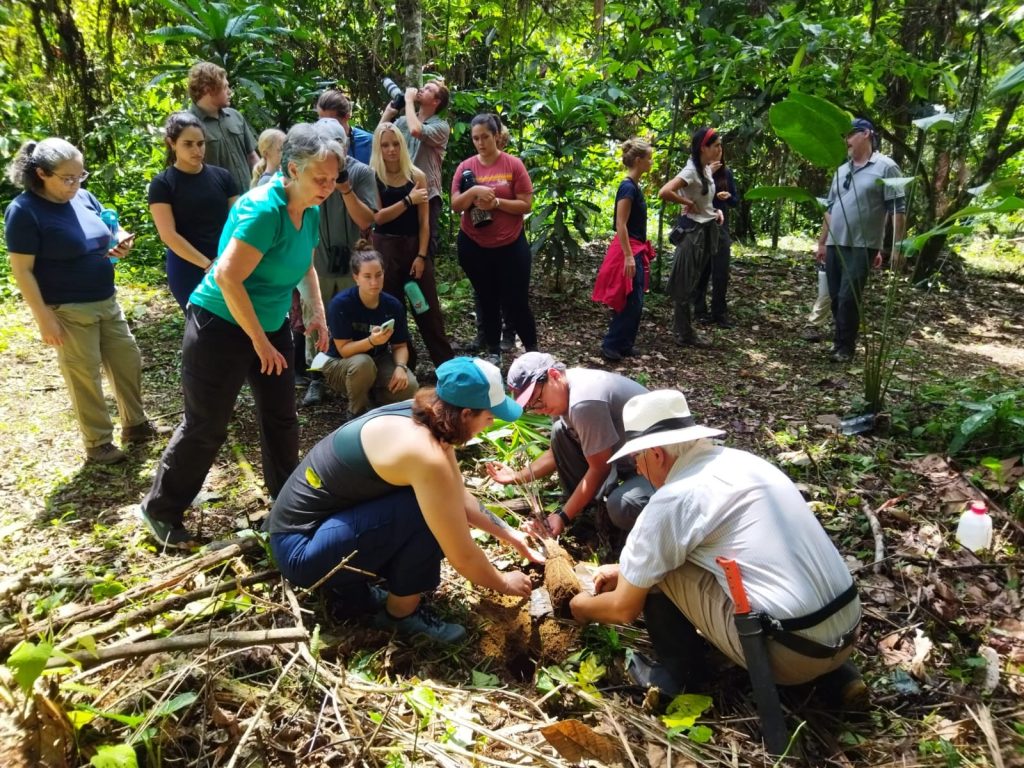
Mallory and Herman planted the first palm, and Gail and Spencer planted the second palm – naming it The Mother of the Jungle, or in Spanish, La Madre de la Selva. These palms will continue to grow at the farm and be an incentive to return and renew our newly formed friendships. At the end of the study abroad trip, Camille and Kelsie will be the first to renew their newly formed friendships by returning to the plantation for an internship.
Facebook post from Pedro:https://www.facebook.com/1743271125958552/posts/3066609760291342/
